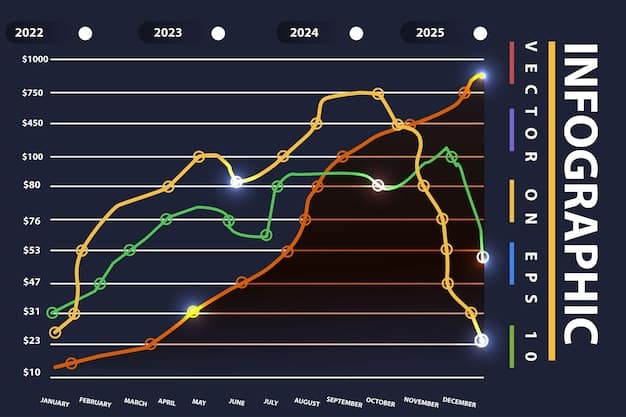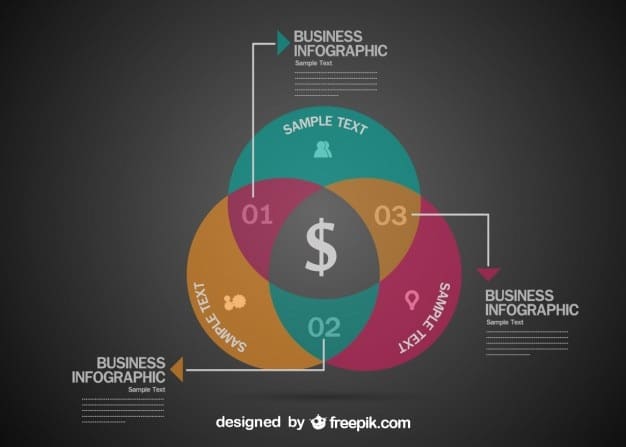Understanding Stock Options: A Tech Professional’s Guide for 2025

Understanding Stock Options and Equity Compensation: A Guide for Tech Professionals in 2025 clarifies complex compensation structures, offering actionable insights for navigating stock options, restricted stock units (RSUs), and employee stock purchase plans (ESPPs) to maximize financial benefits.
Navigating the intricate world of equity compensation can be daunting, especially for tech professionals. Understanding Stock Options and Equity Compensation: A Guide for Tech Professionals in 2025 is essential for making informed decisions about your financial future. This guide provides a clear roadmap to understanding various equity compensation types.
Understanding Stock Options and Equity Compensation: A Guide for Tech Professionals in 2025
In the fast-paced tech industry, compensation packages often extend beyond traditional salaries. A significant component is equity compensation, which includes stock options, restricted stock units (RSUs), and employee stock purchase plans (ESPPs). Understanding Stock Options and Equity Compensation: A Guide for Tech Professionals in 2025 is crucial for maximizing your financial potential.
This guide is designed to equip you with the knowledge and tools necessary to navigate these complex compensation structures. We’ll explore the different types of equity, how they work, and strategies for making the most of them.

Decoding Different Types of Equity Compensation
Equity compensation comes in various forms, each with its own set of rules and implications. It’s important to distinguish between stock options, RSUs, and ESPPs, as each requires a different approach to valuation and management.
This section will delve into the specifics of each type, providing clarity on how they function and how they can contribute to your overall compensation package.
Stock Options: The Right to Buy
Stock options grant you the right to purchase company stock at a predetermined price (the grant price) within a specific timeframe (the vesting period). The potential profit lies in buying the stock at the grant price and selling it later at a higher market price.
Restricted Stock Units (RSUs): Shares with Conditions
RSUs are shares of company stock granted to you, subject to a vesting schedule. Unlike stock options, you don’t need to purchase the shares. Once vested, RSUs are considered income and are subject to taxes.
- Vesting Schedule: Understand the timeline for when your RSUs become fully yours.
- Tax Implications: Be aware of the tax obligations when RSUs vest.
- Company Performance: RSU value is directly tied to the company’s stock performance.
- Liquidity: Consider the liquidity of the stock and your ability to sell it when vested.
Understanding the nuances of stock options versus RSUs is pivotal for making informed financial decisions. Understanding Stock Options and Equity Compensation: A Guide for Tech Professionals in 2025 helps distinguish these types of compensation.
Maximizing Value: Strategic Considerations for 2025
Once you understand the different forms of equity compensation, the next step is to develop a strategy for maximizing their value. This involves considering factors such as your personal risk tolerance, financial goals, and the company’s outlook.
This strategy can be crucial for leveraging equity compensation for long-term financial gain. Here are some key areas to consider.
Tax Planning: Minimizing Your Tax Burden
Equity compensation can trigger significant tax liabilities. Strategic tax planning is essential to minimize your tax burden and maximize your take-home value. Consider consulting with a tax advisor to explore different strategies.
Understanding Vesting Schedules and Cliff Periods
Equity compensation typically vests over a period of time, often with a “cliff” period (e.g., one year). Understanding your vesting schedule is crucial for planning your career and financial future.
- Accelerated Vesting: Know if certain events (like job loss or acquisition) can accelerate vesting.
- Forfeiture: Understand what happens to your unvested equity if you leave the company.
- Negotiation: Consider negotiating vesting terms when joining a company.
Maximizing value means understanding every aspect of your equity package. For tech professionals, Understanding Stock Options and Equity Compensation: A Guide for Tech Professionals in 2025 provides essential insights.

The Role of Company Performance and Industry Trends
The value of your equity compensation is inextricably linked to the performance of your company and the broader industry trends. This makes it essential to stay informed about key market indicators relevant to the tech sector.
Staying informed can help you time your decisions about exercising options or selling shares, based on market forecasts.
Analyzing Company Financials and Projections
Review the company’s financial statements, growth projections, and industry analysis reports. This will provide insights into the company’s health and potential for future growth, allowing you to make data driven decisions regarding your investments.
Staying Informed About Industry Disruption and Innovation
Keep abreast of disruptive technologies, emerging markets, and regulatory changes that could impact the tech industry and your company’s stock price. Adapting to change is going to be more important than ever.
Company performance and industry trends directly impact your equity’s value. Understanding Stock Options and Equity Compensation: A Guide for Tech Professionals in 2025 emphasizes analyzing these factors.
Exercising Stock Options: A Step-by-Step Guide
Exercising stock options involves purchasing company shares at the grant price. This is a significant decision with tax implications and potential financial rewards.
This section outlines the steps involved in exercising your options, providing a practical guide to navigate the process. Each step is important.
Calculating the Potential Profit and Risk
Before exercising your options, calculate the potential profit by subtracting the grant price from the current market price. Assess the risk by considering the company’s future prospects and market volatility.
Understanding the Tax Implications of Exercise
Exercising stock options can trigger an income tax liability. Consult with a tax professional to understand the tax implications specific to your situation and explore strategies to minimize your tax burden.
- Incentive Stock Options (ISOs): May qualify for favorable tax treatment if held for a certain period.
- Non-Qualified Stock Options (NSOs): Taxed as ordinary income when exercised.
- Tax Withholding: Understand how your company will withhold taxes at the time of exercise.
Exercising stock options requires careful planning and execution. For tech professionals, Understanding Stock Options and Equity Compensation: A Guide for Tech Professionals in 2025 offers necessary preparation.
Future Trends in Equity Compensation
The landscape of equity compensation is constantly evolving, driven by changes in the tech industry, regulatory updates, and the evolving needs of employees. Considering these trends is important for remaining relevant.
Understanding emerging trends in equity compensation can help you negotiate a better package and plan for your financial future.
The Rise of Alternative Equity Structures
Some companies are exploring alternative equity structures, such as phantom stock or profit-sharing plans. Understand the terms and conditions of these alternative arrangements and how they align with your financial goals.
Increased Focus on Employee Education and Transparency
Companies have been investing more in employee education programs to help employees better understand their equity compensation. Take advantage of these resources to enhance your knowledge and make informed decisions.
Future trends will redefine equity compensation. Understanding Stock Options and Equity Compensation: A Guide for Tech Professionals in 2025 is vital for staying ahead of these changes.
| Key Point | Brief Description |
|---|---|
| 💰 Stock Options | Grants the right to buy shares at a set price. |
| 📈 RSUs | Company shares awarded after vesting period. |
| 💼 Tax Planning | Essential to minimize tax burdens on equity gains. |
| 📊 Company Performance | Crucial for valuing equity compensation effectively. |
Frequently Asked Questions
The primary forms include stock options, which allow you to purchase company stock; restricted stock units (RSUs), which are shares granted over time; and employee stock purchase plans (ESPPs), which enable discounted stock purchases.
Vesting schedules dictate when you gain full ownership of your equity. A common schedule is a four-year vesting period with a one-year cliff, meaning you must work for at least one year to receive any equity.
Stock options are typically taxed when you exercise them, while RSUs are taxed as ordinary income when they vest. Consulting with a tax advisor is advised to optimize tax strategies.
Generally, any unvested equity is forfeited back to the company when you leave. However, some companies may offer accelerated vesting in certain circumstances, such as a layoff or acquisition.
By providing a clear overview of different equity types, tax implications, and strategic considerations, this guide enables you to assess the value of your compensation and plan your financial future effectively.
Conclusion
In conclusion, Understanding Stock Options and Equity Compensation: A Guide for Tech Professionals in 2025 is essential for navigating the complex world of tech compensation. By mastering the concepts outlined in this guide, you can make informed decisions.
As equity compensation continues to evolve, staying informed and proactive will be crucial. With the right knowledge, you can take control of your financial future and unlock the full potential of your equity.





